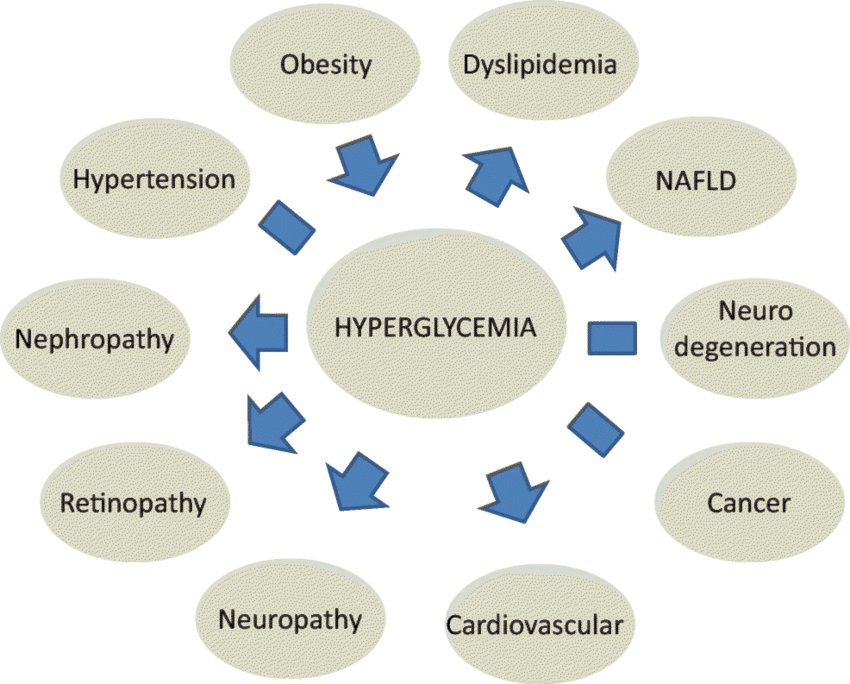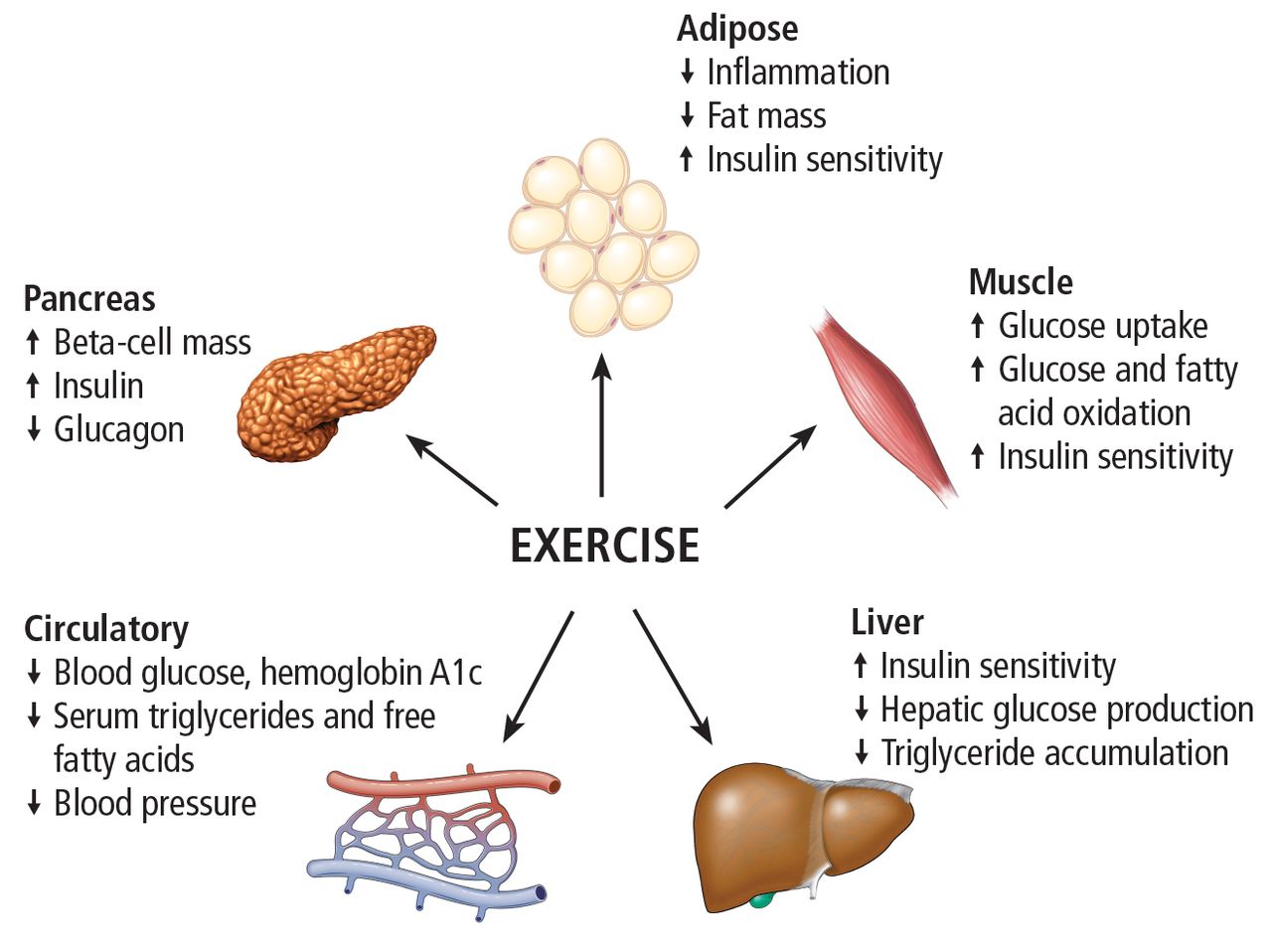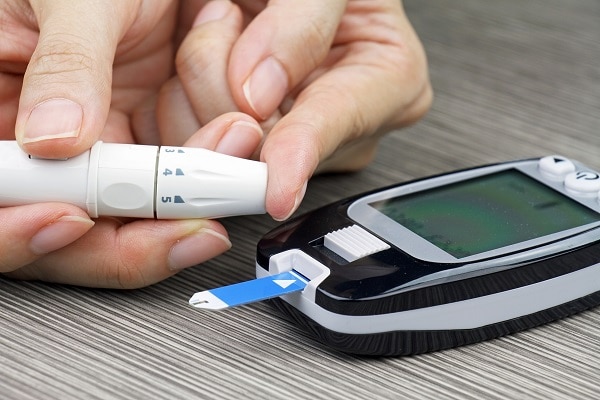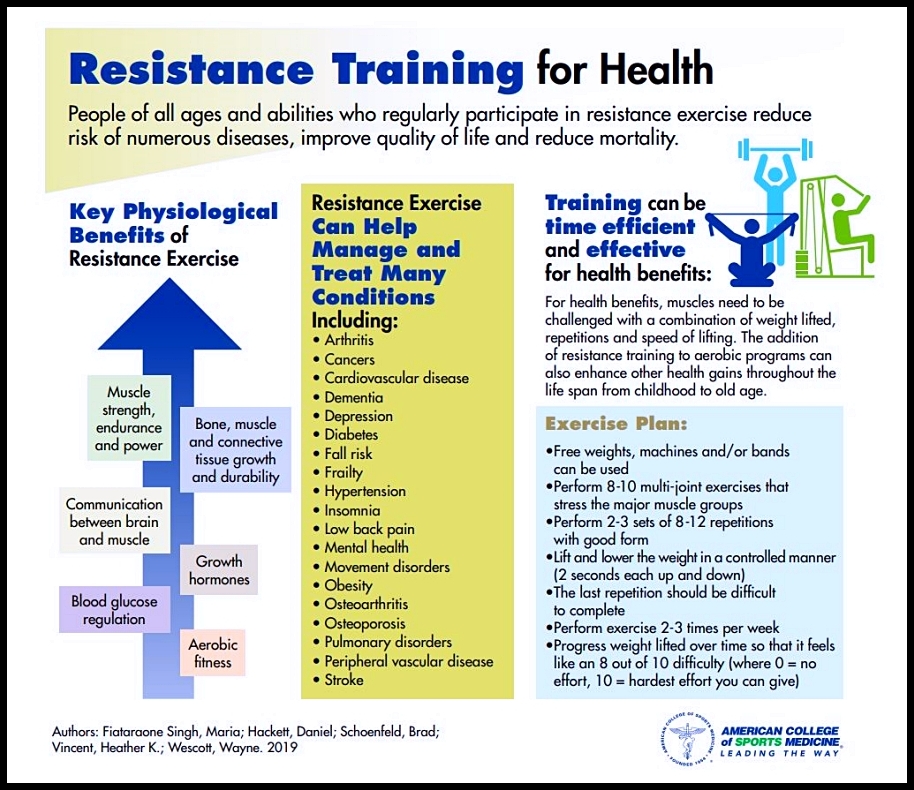
In this author’s most recent posts, interventions to include reduction of refined carbohydrate consumption, reduced vegetable oil intake (i.e., omega-6 rich sources), increased omega-3 consumption, and possible use of magnesium supplementation were considered as methods of optimizing blood glucose levels and reducing insulin resistance. In the following sections, this author would like to explore the value of movement, in the form of exercise, as another means of hyperglycemia management and diabetes prevention.

Individuals with hyperglycemia are considered to be at a higher risk for cardiovascular disease and death.1 Most interestingly, the magnitude of postprandial (after eating) glycemia tends to be more associated with vascular complications than fasting glucose metrics.1(254) Capturing protracted periods of elevated glucose levels bears significance as such a condition tends to increase oxidative cascades; an underlying driver behind vascular damage.1(254) Finally, evidence also suggests that intermittent spikes in glucose concentrations might inflict more damage than constantly elevated glucose levels.1(254) However, inclusion of exercise can help attenuate such spikes and post-prandial elevations in glucose.

Nygaard et al1(254) indicated that exercise immediately after consuming a meal helped blunt postprandial glycemia. Furthermore, said results came from very light intensities (i.e., walking); such data is likely to be encouraging amongst individuals with hyperglycemia who are novices to exercise and who may be reluctant/intimidated by drastic lifestyle changes necessary to improve their conditions.1(254) Finally, such mild aerobic exercise induced normalization of glucose levels and reduced glucose spikes for up to 22 hours after one bout of activity.1(260) Although evidence suggests that walking after a meal shows glucose-related benefits, resistance exercise (RE) also provides another, yet sometimes overlooked, means of providing the same.

Resistance training (RT) holds promise amongst individuals with hyperglycemia/diabetes; Cruz et al.2 indicated that RE demonstrated the capacity to normalize blood glucose level concentrations and time spent in hyperglycemic states. Of particular interest from the researchers was determining if low intensity RE, or high intensity RE, was more beneficial in achieving said states. The researchers recruited 12 type 2 diabetic (T2D) female participants, aged 48-60 years, into a crossover randomized study. The following will consider the study in greater detail.

The researchers constructed the study to include 4 experimental sessions completed during 2 weeks of intervention with 2 RE sessions per week.2(2827) The intervention weeks were in a randomized order. On day 1 of each week, a control session of 40% one repetition maximum (light intensity) or control session of 80% one repetition maximum (high intensity) was performed; on day 2, a RE session of 40% one repetition maximum or 80% one repetition maximum was performed. In each session, the glycemic responses were analyzed during a 24-hour period with preintervention and postintervention measurements using a continuous glucose-monitoring system.2(2827)

Findings indicated that lower intensity (40% one repetition maximum) RE reduced glucose concentration and the prevalence of hyperglycemia in the 24-hour period when compared to 40% one repetition maximum and 80% one repetition maximum (high intensity) sessions, respectively, during total time post- interventions.2(2832) The researchers suggested that said results (from high intensity exercise) could be explained by an exaggerated increase in the counter-regulatory hormonal response induced by a speed increase of anaerobic glycolysis.2(2833) Such an event would lead to higher hepatic and muscle glycogenolysis (breakdown of glycogen to glucose)/gluconeogenesis (production of glucose from non-carbohydrate sources) from higher sympathetic nervous activity.2(2833)
In conclusion, hyperglycemia is a condition that is best addressed from a multifaceted approach to include reduction of refined carbohydrate consumption, reduced vegetable oil intake (i.e., omega-6 rich sources), increased omega-3 consumption, and possible use of magnesium supplementation. However, implementation of movement, in the form of low-intensity aerobic exercise and low intensity RE, has demonstrated and meaningful influence upon hyperglycemia. As such, when developing strategies to mitigate signs and symptoms of said condition, it might be best to fuse movement and nutrition protocols when possible.
References
1. Nygaard H, Ronnestad BR, Hammarstrom D. Effects of exercise in the fasted state and postprandial state on interstitial glucose in hyperglycemic patients. J Sports Sci Med. 2017; 16(2):254-263.
2. Cruz LCD, Teixeira-Araujo AA, Andrade KTP, et al. Low-intensity resistance exercise reduces hyperglycemia and enhances glucose control over a 24-hour period in women with type 2 diabetes. JStrength Cond Res. 2018;33(10):2826-2835. doi:10.1519/JSC.0000000000002410.
-Michael McIsaac
